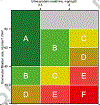Kidney Disease Progression in Children and Young Adults With Pediatric CKD: Epidemiologic Perspectives and Clinical Applications
- PMID: 34916001
- PMCID: PMC8694646
- DOI: 10.1016/j.semnephrol.2021.09.002
Kidney Disease Progression in Children and Young Adults With Pediatric CKD: Epidemiologic Perspectives and Clinical Applications
Abstract
Chronic kidney disease (CKD) progression is typically characterized as either time to a clinically meaningful event (such as dialysis or transplant), or longitudinal changes in kidney function. This review describes pediatric kidney disease progression using these two distinct frameworks by reviewing and discussing data from the Chronic Kidney Disease in Children study. We first describe new equations to estimate glomerular filtration rate (GFR) for patients younger than age 25 years, and how the average of serum creatinine-based and cystatin C-based GFR equations yield valid estimates than either alone. Next, we present a life course description of CKD onset to kidney replacement therapy, prediction models based on clinical measurements, and show the importance of diagnosis (broadly classified as nonglomerular and glomerular in origin), GFR level, and proteinuria on progression. Literature on longitudinal GFR in children and young adults are reviewed and new data are presented to characterize nonlinear changes in estimated GFR in patients younger than age 25 years. These models showed accelerated progression associated with glomerular diagnosis, lower GFR level, and higher proteinuria, which was congruent with time-to-event analyses. Descriptions of online tools for GFR estimation and risk stratification for clinical applications are presented and we offer key epidemiologic considerations for the analysis of longitudinal pediatric CKD studies.
Keywords: Pediatric nephrology; chronic kidney disease; estimated glomerular filtration rate; glomerular filtration rate; patient-centered care; pediatric kidney disease.
Copyright © 2021 Elsevier Inc. All rights reserved.
Conflict of interest statement
Figures




References
-
- Eckardt K-U, Coresh J, Devuyst O, et al.: Evolving importance of kidney disease: from subspecialty to global health burden. The Lancet 382:158–169, 2013. - PubMed
-
- Schwartz GJ, Furth S, Cole SR, et al.: Glomerular filtration rate via plasma iohexol disappearance: pilot study for chronic kidney disease in children. Kidney Int 69:2070–2077, 2006. - PubMed
Publication types
MeSH terms
Grants and funding
LinkOut - more resources
Full Text Sources
Medical

